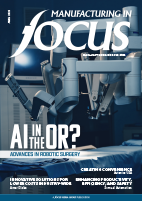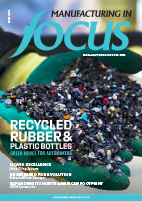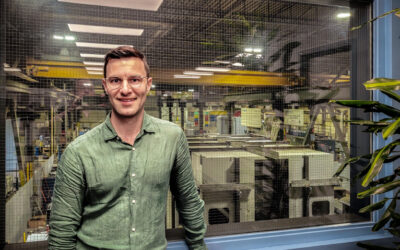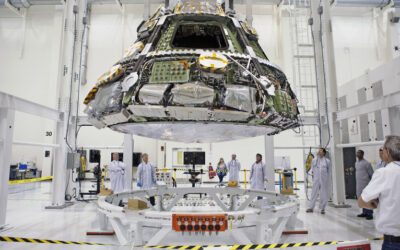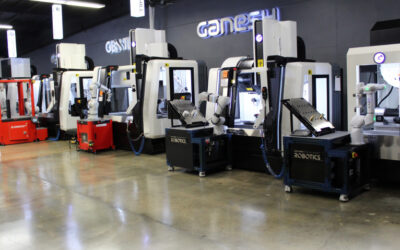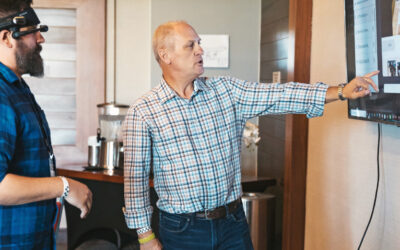On September 26, 2019, Russian astronauts onboard the International Space Station (ISS) carried out a historic culinary experiment. They successfully created artificial beef in outer space, utilizing a so-called three-dimensional (3D) bioprinter.
The sample was tiny, and the Russians did not eat it. The goal was simply to prove that bioprinting food in a micro-gravity environment on a spaceship was feasible. Having a 3D bioprinter on-board spacecraft could make meals for astronauts during long-term missions.
The achievement was a remarkable example of the potential of 3D bioprinting. This very new technology is being used by researchers to ‘print’ both food and replacement body parts and offers huge benefits for the planet and patients alike.
“We are showing that we can produce food without the reliance on local land and water resources,” stated Yoav Reisler, spokesperson for Aleph Farms, a pioneer in the bioprinted meat market, in an interview with CNET published October 7, 2019.
Aleph Farms of Israel teamed up with a Russian firm called 3D Bioprinting Solutions and two American companies called Meal Source Technologies and Finless Foods for the ISS experiment.
“Aleph Farms starts by gathering cells from live cows. It nourishes and grows them in a lab environment, then assembles them in formations that are recognizable as meat for human consumption. The company refers to this as ‘slaughter-free meat’. The lab version is meant to have the same taste and texture as farmed meat,” said the CNET article.
So, what exactly is ‘3D bioprinting?’
It turns out that it is not that much different than 3D printing plastic or metal car parts in a manufacturing plant. Much like these processes, bioprinting is a type of additive manufacturing. However, bioprinting uses a bioink made from growth factors and cells as the medium from which to print imitation tissue.
“Bioink is a combination of living cells and a compatible base, like collagen, gelatin, hyaluronan, silk, alginate, or nanocellulose. The latter provides cells with scaffolding to grow on and nutriment to survive on,” explained All3DP, a German-based online magazine devoted to 3D printing.
In addition to benefiting astronauts, bioprinting meat, particularly beef, would be good for the environment down here on earth.
“Beef production uses up a lot of land and resources. Cows grow and reproduce slower than pigs and poultry, so they eat a lot more and need more land and water,” reported an October 8, 2019 CNN.com article. “Beef alone is responsible for 41 percent of livestock greenhouse gas emissions, and that livestock accounts for 14.5 percent of total global emissions, according to the United Nations. That’s more than direct emissions from the transportation sector.”
Bioprinting meat would also reduce the need to slaughter livestock, giving vegans and vegetarians a guilt-free way to enjoy the taste of beef, pork, and chicken.
While it might not be the most palatable thought in the world, the process for 3D bioprinting meat and 3D bioprinting human organs is quite similar. Both processes involve using cells – from animals or humans, depending on the need – to create the material required for bioprinting.
A couple of weeks before astronauts on the International Space Station made food history, a Chicago biotechnology company called BIOLIFE4D became the first firm in America to bioprint a miniature human heart.
In a press release from September 9, 2019, the company said it conducted its experiments at a research facility in Houston.
“The successfully printed mini heart has the full structure of a full-sized heart, with four internal chambers. The mini-heart is replicating partial functional metrics compared to a full-sized heart – as close as anyone has gotten to producing a fully functional heart through 3D bioprinting,” said the press release.
For this task, the company developed a proprietary bioink “using a very specific composition of different extracellular compounds that closely replicate the properties of the mammalian heart,” continued the press release.
The company previously achieved success 3D bioprinting various heart parts including blood vessels, valves, and ventricles. In June 2018, BIOLIFE4D was able to successfully bioprint a cardiac patch.
The first step in bioprinting human parts entails creating a digital 3D model, usually via computed tomography (CT) or magnetic resonance imaging (MRI) scans, describes All3DP magazine. After that, 3D modeling is carried out and a blueprint is created using AutoCAD software. A special bioink is prepared before actual bioprinting can begin.
“The 3D printing process involves depositing the bioink layer-by-layer, where each layer has a thickness of 0.5 mm or less. The delivery of smaller or larger deposits highly depends on the number of nozzles and the kind of tissue being printed. The mixture comes out of the nozzle as a highly viscous fluid,” said All3DP. If all goes to plan, the viscous, liquid layers will start to solidify, and more layers will be deposited. Eventually, a body part is produced.
The 3D bioprinting process presents huge advantages for medical patients. For a start, the procedure might speed the rate of organ transplants, and this is good news for the over 100,000 Americans currently on waiting lists for organ transplant operations. Instead of waiting for a body part from a donor, human organs and tissues could be bioprinted on demand.
Since the process can use a patient’s own cells to make organs, the risk of rejection might be reduced as well as the need for immunosuppressant therapy. There will be less demand for lab animals as researchers could 3D bioprint organs to test patient-specific pharmaceuticals.
These developments are all quite new. Just nine years ago, Dr. Anthony Atala created a huge stir during a TED Talk when he discussed the concept of 3D bioprinting. The director of the Wake Forest Institute for Regenerative Medicine (WFIRM) at the Wake Forest School of Medicine in Winston-Salem, North Carolina, Dr. Atala had a simple question of his audience: “Can we grow organs instead of transplanting them?”
During his 2011 presentation, Dr. Atala outlined the steps involved in bioprinting human parts. Then, to the astonishment of those in attendance, he revealed a life-sized kidney built from human cells that had been 3D bioprinted on the spot. The kidney was not functional but gave the TED Talk crowd a sense of the medical possibilities of the technology.
The Wake Forest Institute is now one of the main organizations in the 3D bioprinting field. WFIRM “is a leader in translating scientific discovery into clinical therapies,” stated the Institute website. “Today, [an] interdisciplinary team is working to engineer more than 30 different replacement tissues and organs to develop healing cell therapies – all with the goal to cure, rather than merely treat, disease.
“Engineering an organ or tissue begins with having the right kinds of cells. In some cases, cells are isolated from a small tissue sample the size of a postage stamp. They are then mixed with growth factors and multiplied in the lab,” added the site. “For cell types that cannot be adequately grown outside the body (like heart, nerve, liver and pancreas cells, for example), stems cells may be an option.”
During early experiments only a few years ago, the institute used an inkjet desktop printer for bioprinting research. The printer had been modified “to print cells into a 3D shape. Cells were placed in the wells of the ink cartridge and the printer was programmed to print them in a certain order,” said the WFRIM website.
This pioneering work soon bore fruit, with a breakthrough announced in a February 15, 2016 institute press release. “Reporting in Nature Biotechnology, [WFRIM] scientists said they printed ear, bone and muscle structures. When implanted in animals, the structures matured into functional tissue and developed a system of blood vessels. Most importantly, these early results indicate that the structures have the right size, strength and function for use in humans,” stated the press release.
Along the way, WFIRM discovered that existing printers do not work well when trying to bioprint body parts. To solve this issue, the team developed a technique called the Integrated Tissue and Organ Printing System (ITOP) which “deposits both bio-degradable, plastic-like materials to form the tissue ‘shape’ and water-based gels that contain the cells. In addition, a strong, temporary outer structure is formed. The printing process does not harm the cells,” explained the release.
The ITOP process “can fabricate stable, human-scale tissue of any shape. With further development, this technology could potentially be used to print living tissue and organ structures for surgical implantation,” added Dr. Atala, in the press release.
For all this, do not expect 3D bioprinting to see mainstream commercial use soon. Much research still needs to be done and bioprinted meat probably will not hit grocery store shelves for at least a few years. Likewise, full-sized, fully functional human organs have yet to be bioprinted or implanted in patients.
Still, the opportunities presented by 3D bioprinting technology hold great promise. “Bioprinters are now capable of creating functional biological structures with the potential to one day restore, maintain, improve and/or replace existing organ function,” noted BIOLIFE4D.



